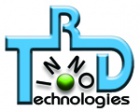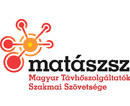Letter of Welcome
 József Vörös
József VörösHungary abounds in solutions that have become known all over the world, and still dominate railway development. Just think of the development of the single-phase electric traction, the application and dissemination of the hard cast railway wheel production or the GANZ engine trains. Railway used to provide high tensile strength to all industries (mining, metallurgy, electrical engineering, instrumentation industry) and also to other stakeholders in economy. By today, the situation has changed. It is primarily the rapid evolution of information technology that allows harnessing the achievements of railway development. Excellent examples for this are rack and bridge diagnostic methods developed and/or administered by Hungarian engineers. These resulted in tried-and-true solutions adopted in different European countries. Naturally, IT knowledge is not enough for this. Only detailed knowledge of railway operations, familiarity with other disciplines, and adequate capacity for innovation can lead to really successful solutions. This is how the Rail Scan method was created, which provides non-destructive knowledge-acquisition of thermal stress in seamless tracks, and is now used in many countries all over the world. The opportunities offered by computing allow previously unimaginable amounts of dataset processing, for instance, enables researchers examining slow signal effects in the context of energy consumption to get more accurate results. Another industry opening wide opportunities for the development of railway technology is the chemical industry. Ongoing research is being conducted with the use of polymer composites in transport developments in Hungary, the results of which can already be experienced in many areas. There are times when the joint application of information technology, chemical industry, and precision engineering innovations brings about an outstanding, environmentally friendly solution, for instance, the automatically controlled weed control of railway tracks, which is also used in several countries.
We could go on with examples of railway and other areas (track construction and maintenance machinery, superstructures, support equipment, simulation systems), however, I think all I mentioned above have clearly demonstrated the tremendous opportunity to enhance economic and safe railway transport by the application of scientific achievements.•























